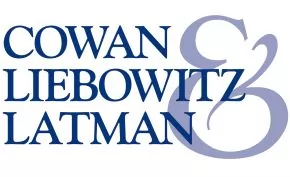A group of marks having a recognizable characteristic in common with each other may enjoy greater protection than each individual mark, depending on how the marks are promoted and when the rights are asserted.

How to Qualify
Simply using a series of marks having the same characteristic does not itself create a family of marks. The purchasing public must recognize that the shared characteristic indicates common origin. This depends on the use, advertising and distinctiveness of the marks and the contribution made by the common characteristic. In other words, the marks must be promoted in a way that creates a public recognition of the family, and the feature that characterizes the family must be distinctive.
For example, in the seminal case J & J Snack Foods Corp. v. McDonald's Corp., 932 F.2d 1460 (Fed. Cir. 1991), McDonald's was recognized to have a family of marks combining the "Mc" formative with a generic name such as McDONUT, McPIZZA, McMUFFIN, McCHICKEN and McRIB. The promotion and distinctiveness of the "Mc" feature prevented someone else from registering McPRETZEL. This was so even though there were third party registrations and uses of various "Mc" names, McDonald's did not use or own "Mc" by itself, and McPRETZEL was not confusingly similar to any of the individual marks comprising the McDonald's family of marks.
When the Doctrine is Applicable
The family of marks doctrine may be asserted:
- By an Applicant seeking to establish that its applied-for mark has acquired distinctiveness as a new member of a recognized family of marks.
- By a Plaintiff in an opposition or cancellation proceeding asserting that the Defendant's mark is likely to be confused with the Plaintiff's family of marks.
But this doctrine is not available for use:
- In an appeal from a refusal to register the Applicant's mark because it is regarded as confusingly similar to a third party's prior registered mark. The Applicant's use of marks other than the applied-for mark is deemed irrelevant to this issue.
- By a Defendant in an opposition or cancellation proceeding asserting priority by "tacking" Defendant's mark to a family of marks it used before the Plaintiff's registration. "Tacking" requires that the Defendant's two marks be equivalent or indistinguishable, but it does not extend to Defendant's use of similar marks. The Defendant's remedy in such a case would be to start a civil action asserting that the intervening mark is likely to be confused with its prior family of marks.
Distinctiveness Rejected
The distinctiveness requirement as applied to the common element in an alleged family of marks is being tested in a case currently on appeal to the U.S. Court of Appeals for the Federal Circuit. Pure & Simple Concepts, Inc. v. I H W Management Limited DBA The Finchley Group, Opposition No. 91234659 (T.T.A.B. 2019), appeal pending.
The Applicant here is seeking to register BLUE INDUSTRY (in plain lettering) for various articles of clothing, and this application has been opposed. The Opposer is claiming a likelihood of confusion with its family of INDUSTRY marks for clothing, and a likelihood of dilution by the blurring of the distinctiveness of its family of those marks, for which Opposer has eight registrations. Four of those marks, each with a different design element, are shown below:

The Trademark Trial and Appeal Board (TTAB) dismissed this opposition. It did not question the Opposer's assertion that it had promoted its INDUSTRY formative marks together on its website, but it determined that it was precluded from finding that Opposer owns a family of marks for the shared INDUSTRY element. The evidence of 74 third-party registrations, and 12 examples of uses of INDUSTRY formative marks for clothing persuaded the TTAB that this term is both conceptually and commercially weak The TTAB reasoned that the sheer volume of third-party registrations and uses has conditioned consumers to look for differences between INDUSTRY formative marks to determine the source of a given product, and consumers are therefore less likely to be confused by such marks.
Accordingly, the TTAB found that the addition of the word BLUE to INDUSTRY, particularly as the first word, caused the applied-for mark BLUE INDUSTRY as a whole to be sufficiently different in appearance, sound, meaning, or commercial impression as to make confusion unlikely. This was so even though the goods were in part identical and the trade channels were unrestricted so presumed to be the same.
The TTAB also found that Opposer's marks were not famous for dilution purposes because the evidence fell far short of proving that consumers recognized them as a household name.
Opposer has appealed the TTAB decision to the U.S. Court of Appeals for the Federal Circuit, so the application to these facts of the distinctiveness requirement for finding a family of marks is subject to further review.
The content of this article is intended to provide a general guide to the subject matter. Specialist advice should be sought about your specific circumstances.

